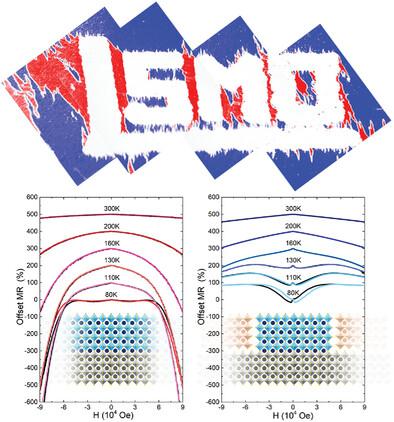Correlated Magnetic and Electrical Phenomena in Epitaxially Weaved Manganite Lateral Homostructures
IF 13
2区 材料科学
Q1 CHEMISTRY, MULTIDISCIPLINARY
引用次数: 0
Abstract
Artificially aligned or positioned functional materials are essential building blocks for modern devices and nanoelectronics. Since the emergence of 2D materials, the vertical stacking/integration of exotic materials has garnered increasing attention. However, controlling homostructures, e.g. identical materials conjoined with varying crystalline orientations, magnetism, or strain states, along the lateral direction remains challenging. Leveraging on the freestanding thin film growth techniques, the concept of twisted lateral homostructures has been introduced, enabling precise control over the lateral alignment of crystalline directions. Here, using La0.7Sr0.3MnO3, a classic strongly correlated material, the precise manipulation of epitaxial strain alongside the homojunction is demonstrated. This leads to a precisely controllable lateral homostructure composed of polymorphic ferromagnetic and antiferromagnetic La0.7Sr0.3MnO3 regions. It is further identified that the interactions between the ferromagnetic and antiferromagnetic regions of La0.7Sr0.3MnO3 lead to unconventional ultrafast spin dynamics and magnetotransport behavior. The results provide a promising platform for developing novel emergent phenomena and functionalities in the twisted lateral homostructures.

求助全文
约1分钟内获得全文
求助全文
来源期刊

Small
工程技术-材料科学:综合
CiteScore
17.70
自引率
3.80%
发文量
1830
审稿时长
2.1 months
期刊介绍:
Small serves as an exceptional platform for both experimental and theoretical studies in fundamental and applied interdisciplinary research at the nano- and microscale. The journal offers a compelling mix of peer-reviewed Research Articles, Reviews, Perspectives, and Comments.
With a remarkable 2022 Journal Impact Factor of 13.3 (Journal Citation Reports from Clarivate Analytics, 2023), Small remains among the top multidisciplinary journals, covering a wide range of topics at the interface of materials science, chemistry, physics, engineering, medicine, and biology.
Small's readership includes biochemists, biologists, biomedical scientists, chemists, engineers, information technologists, materials scientists, physicists, and theoreticians alike.
 求助内容:
求助内容: 应助结果提醒方式:
应助结果提醒方式:


